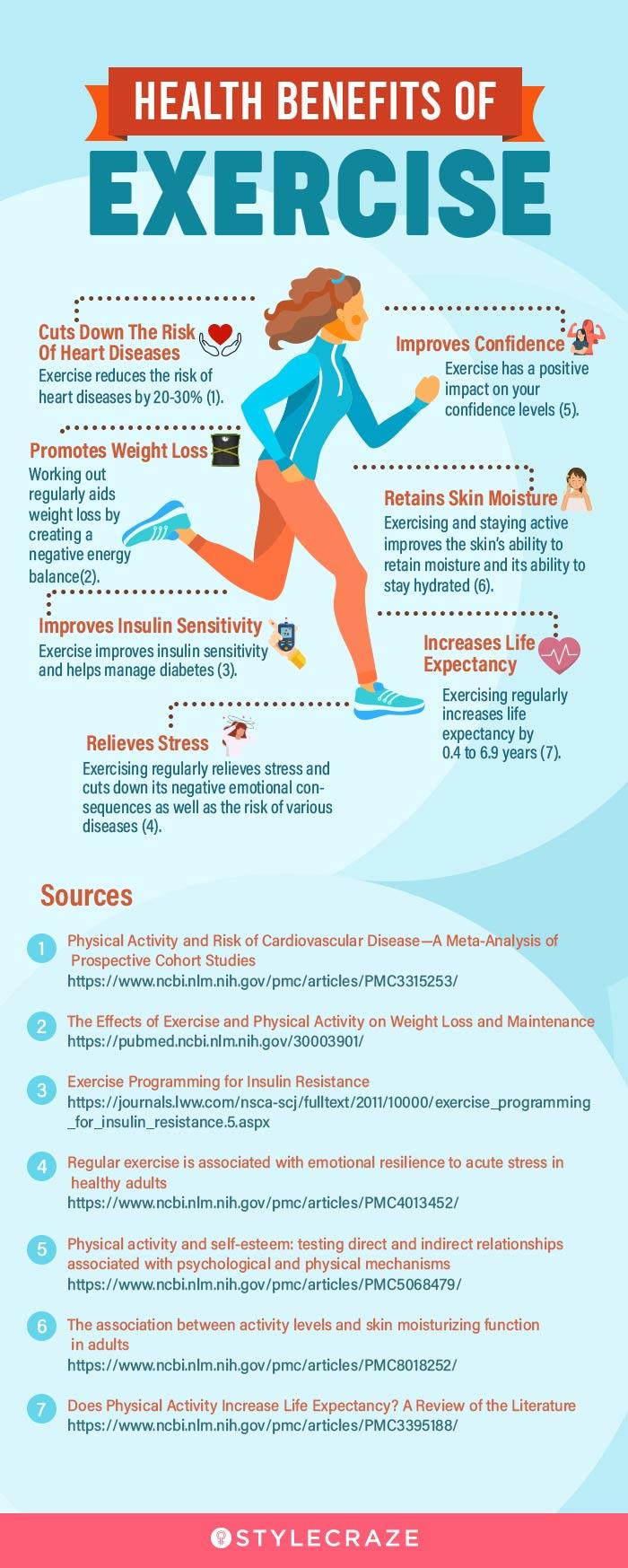Importance of Regular Exercise, Regular exercise offers numerous benefits for both your physical and mental health. Whether you’re a beginner or have been out of the fitness routine for a while, this article will provide you with some tips and guidance on how to incorporate regular exercise into your daily life.
Exercise plays a crucial role in maintaining a healthy weight, reducing the risk of chronic diseases such as heart disease and diabetes, improving mood and mental clarity, and boosting energy levels. It also helps to strengthen muscles, improve flexibility, and enhance overall physical performance.
Setting realistic fitness goals is essential when starting an exercise routine. By setting achievable goals, you can track your progress and stay motivated. It’s important to start slowly and gradually increase the intensity and duration of your workouts. Remember, Rome wasn’t built in a day, and the same goes for your fitness journey.
Incorporating exercise into your daily routine doesn’t have to be complicated. Simple activities like walking instead of driving or taking the stairs instead of the elevator can make a big difference. Find activities that you enjoy and make it a priority to schedule them into your day.
Don’t let common barriers like lack of time or motivation hold you back from regular exercise. With some creative thinking and determination, you can overcome these obstacles. Start by making it a habit and finding an accountability partner to keep you on track.
Benefits of Regular Exercise

Regular exercise offers numerous benefits for your overall health and well-being. It helps you maintain a healthy weight and reduces the risk of chronic diseases like heart disease and diabetes. Exercise improves your mood, boosts mental clarity, and increases energy levels. It strengthens your muscles, improves flexibility, and enhances physical performance.
In addition to the physical benefits, regular exercise also has positive effects on your mental health. It reduces symptoms of anxiety and depression, improves sleep quality, and helps manage stress. Exercise releases endorphins, which are natural mood boosters, leaving you feeling happier and more relaxed.
Exercise is not just about appearance; it’s about improving your quality of life. With regular exercise, you’ll have more energy to tackle daily tasks, have better focus and productivity at work or school, and experience an overall sense of well-being.
So whether it’s going for a run, taking a dance class, or hitting the gym, prioritize regular exercise to reap all these benefits for your body and mind.
Setting Fitness Goals

Setting Fitness Goals
To make the most out of your exercise routine, it’s important to set specific fitness goals. Setting goals gives you something to work towards and helps you stay motivated. When setting fitness goals, start by assessing your current fitness level and determining what you want to achieve.
Setting Realistic Fitness Goals
It’s crucial to set realistic fitness goals that are attainable for your current fitness level. Be honest with yourself about what you can realistically accomplish within a certain timeframe. Setting unrealistic goals can lead to disappointment and frustration. Instead, break down your larger goals into smaller, achievable milestones. This way, you can track your progress and celebrate each achievement along the way.
Remember, everyone’s fitness journey is unique, so don’t compare yourself to others. Focus on improving your own health and well-being, and set goals that align with your personal needs and interests. Whether it’s increasing your endurance, gaining strength, or improving flexibility, setting realistic fitness goals will keep you motivated and on track.
Setting Realistic Fitness Goals

When setting fitness goals, it’s important to be realistic. Consider your current fitness level and what you can realistically achieve within a certain timeframe. Don’t set yourself up for disappointment by setting goals that are too ambitious.
Break down your larger fitness goals into smaller, achievable milestones. This will allow you to track your progress and celebrate each milestone along the way. For example, if your ultimate goal is to run a marathon, start by setting a goal to finish a 5K race.
Remember to focus on your own journey and not compare yourself to others. Everyone’s fitness journey is different, so set goals that align with your personal needs and interests. Whether it’s improving strength, increasing flexibility, or boosting endurance, choose goals that are meaningful to you.
By setting realistic fitness goals, you’ll stay motivated and on track. So take some time to assess where you currently are and think about what you want to achieve. Then set those realistic goals and start working towards them!
Types of Exercises
There are various types of exercises you can incorporate into your fitness routine. Cardiovascular exercises, such as jogging, cycling, or swimming, are great for improving your heart health. These exercises get your heart pumping and increase your endurance.
Strength training exercises focus on building muscle and increasing strength. This can include weightlifting, resistance band workouts, or bodyweight exercises like push-ups and squats. Strength training helps improve overall fitness and can enhance your ability to perform daily activities.
Flexibility exercises help improve the range of motion in your joints and muscles. Examples of flexibility exercises include stretching, yoga, and Pilates. These exercises are crucial for preventing injuries and maintaining mobility as you age.
Don’t forget about incorporating balance exercises into your routine. These exercises help improve stability and coordination, reducing the risk of falls. Some examples of balance exercises include standing on one leg or doing tai chi.
By incorporating a variety of different exercise types into your routine, you can target different areas of fitness and achieve a well-rounded workout. Remember to always warm up before exercising and cool down afterward to prevent injury.
Cardiovascular Exercises for Heart Health
Cardiovascular exercises are essential for improving your heart health. Engaging in activities such as jogging, cycling, or swimming can get your heart pumping and increase your endurance. By regularly participating in cardiovascular exercises, you can strengthen your heart muscles and improve its efficiency in delivering oxygen-rich blood to your body.
These exercises also help lower blood pressure, reduce cholesterol levels, and decrease the risk of heart disease. They improve circulation, allowing your blood vessels to function optimally. Cardiovascular exercises can also help with weight management by burning calories and promoting fat loss.
To reap the benefits of cardiovascular exercise, it is recommended to aim for at least 150 minutes of moderate-intensity aerobic activity or 75 minutes of vigorous-intensity aerobic activity per week. Remember to start slowly and gradually increase the intensity and duration of your workouts to avoid overexertion.
Incorporating cardiovascular exercises into your fitness routine will not only benefit your heart but also boost your overall well-being and energy levels. So lace up those sneakers and get moving for a healthier heart!
Incorporating Exercise into Daily Routine

To make exercise a regular part of your daily routine, you need to find ways to seamlessly integrate it into your busy schedule. Start by prioritizing exercise and treating it as an essential aspect of your overall well-being. Set specific times during the day when you can dedicate to physical activity without any distractions.
Look for opportunities to be active throughout the day. Take the stairs instead of the elevator, park your car farther away from your destination, or go for a walk during your lunch break. These small changes can add up and contribute to reaching your fitness goals.
Consider including exercise in activities you already enjoy. If you love watching TV shows or listening to podcasts, use that time to do stretches, squats, or jump rope. You can also try incorporating exercise into household chores by doing lunges while vacuuming or doing push-ups during commercial breaks.
Find a workout buddy or join a fitness class to stay motivated and accountable. Exercising with others can make the experience more enjoyable, and having someone to share your progress with will help keep you on track.
Remember, consistency is key when incorporating exercise into your daily routine. Start with small steps and gradually increase the duration and intensity of your workouts. With time, exercise will become a natural habit that contributes to your overall health and well-being.
Overcoming Importance of Regular Exercise
To incorporate exercise into your daily routine, you may encounter various barriers that can make it challenging to stay consistent. However, with some determination and strategies, you can overcome these barriers and make exercise a regular part of your life.
One common barrier is a lack of time. If your schedule is packed, try breaking your workouts into shorter sessions throughout the day. For example, you can do 10 minutes of stretching in the morning, take a brisk walk during lunch, and engage in a quick workout routine in the evening.
Another barrier is a lack of motivation. To overcome this, find activities that you enjoy and make them part of your exercise routine. Whether it’s dancing, cycling, or playing sports, finding activities that bring you joy will increase your motivation to stick with them.
By addressing these barriers head-on and finding effective strategies to overcome them, you’ll be able to incorporate exercise into your daily routine successfully. Remember, small steps consistently taken will lead to significant progress over time.
For More Blogs visit Aerns

